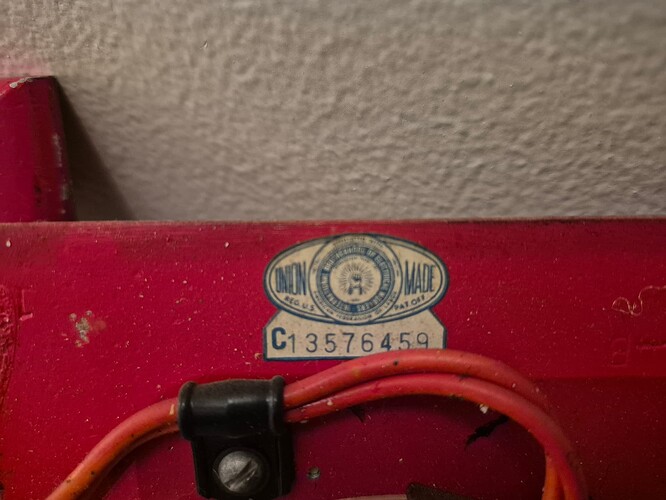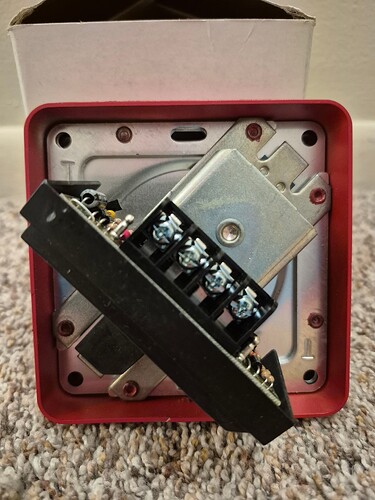The Flat Rock Speedway flea market rolled around once again this year, and it did not disappoint! I met up with a few fellow collectors and made some trades, plus bought some devices of my own! This is a long post, but very informative.
This is my Vulcan VA-M-30 wind-up bell, manufactured by U.S. Safety and Engineering Corporation.
I was quite excited to buy this Family Gard FG888D smoke detector for only a buck, especially with its original packaging and instructions.
Sadly, the euphoria dwindled when I tried testing it. After replacing the original 9-volt battery with a fresh one, I discovered that the piezo was extremely weak, and would give off a scratchy sound. For everyone’s info, the unit is set to temporal coding.
At the same table with the Family Gard, I bought this Probe Model 101 smoke detector for a buck, which I later learned is an extremely rare Sears rebrand. As you can see in the last picture, the original clip connector is so corroded that I’ll have to replace it at some point before I can even test it. The original battery was even worse with corrosion. The original packaging isn’t in the best of shape, either, especially with the yellowing.
As part of my trade with a fellow alarm enthusiast, I obtained this National Time & Signal Corporation (Natsco) 541S pull station, a rebranded Sigcom unit that also came with a replacement key.
The trade also included this Natsco Type 620M pull station, which came with a replacement break rod inside the unit. There’s another variant of this pull station with smaller font. If you look closely in the third picture, you’ll see a 620M casting, model info, voltage info, and an address.
Third in the trade was this Simplex 4090-6 chime, the first time ever that I have a chime in my collection.
Rounding out the trade was my favorite device of them all, and one with many personal connections: A Natsco 624W-AV horn/strobe, which is a rebranded Faraday unit. As somebody who grew up seeing and hearing very similar devices all throughout grade school (and being petrified of fire drills), I was gleeful to have this, and I still am!
I saved something pretty neat for last. This a black vibrating bell with a 10" gong, and you’ll notice a few holes in front where the nameplate used to be. I was told by a fellow enthusiast that this may be a Schwarze, but it’s unconfirmed. I was able to get it to ring on 3VDC, but after a couple of seconds, it mysterious stops ringing, or the striker starts missing the gong entirely.
















































































